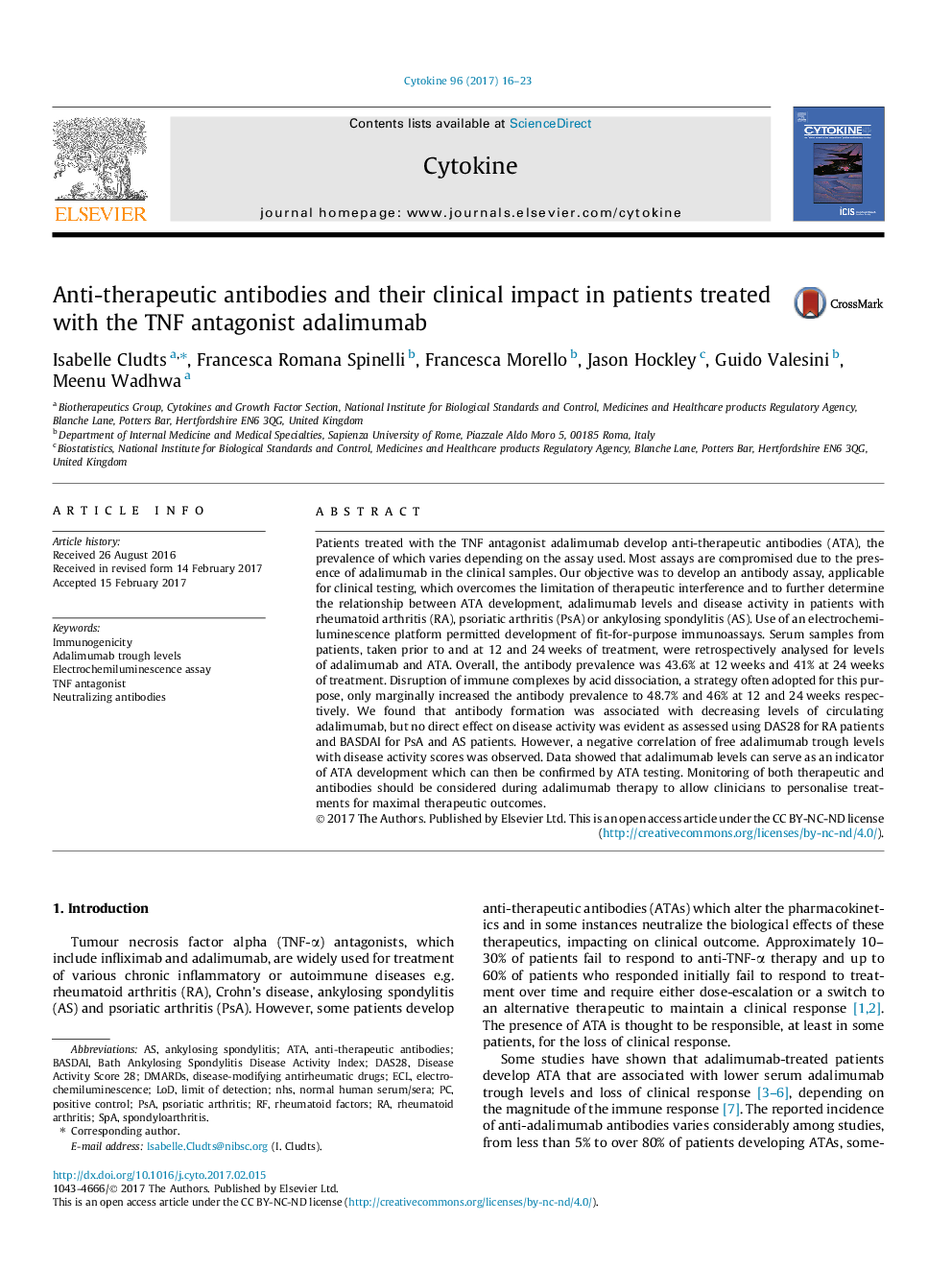| Article ID | Journal | Published Year | Pages | File Type |
|---|---|---|---|---|
| 5586977 | Cytokine | 2017 | 8 Pages |
Abstract
Patients treated with the TNF antagonist adalimumab develop anti-therapeutic antibodies (ATA), the prevalence of which varies depending on the assay used. Most assays are compromised due to the presence of adalimumab in the clinical samples. Our objective was to develop an antibody assay, applicable for clinical testing, which overcomes the limitation of therapeutic interference and to further determine the relationship between ATA development, adalimumab levels and disease activity in patients with rheumatoid arthritis (RA), psoriatic arthritis (PsA) or ankylosing spondylitis (AS). Use of an electrochemiluminescence platform permitted development of fit-for-purpose immunoassays. Serum samples from patients, taken prior to and at 12 and 24Â weeks of treatment, were retrospectively analysed for levels of adalimumab and ATA. Overall, the antibody prevalence was 43.6% at 12Â weeks and 41% at 24Â weeks of treatment. Disruption of immune complexes by acid dissociation, a strategy often adopted for this purpose, only marginally increased the antibody prevalence to 48.7% and 46% at 12 and 24Â weeks respectively. We found that antibody formation was associated with decreasing levels of circulating adalimumab, but no direct effect on disease activity was evident as assessed using DAS28 for RA patients and BASDAI for PsA and AS patients. However, a negative correlation of free adalimumab trough levels with disease activity scores was observed. Data showed that adalimumab levels can serve as an indicator of ATA development which can then be confirmed by ATA testing. Monitoring of both therapeutic and antibodies should be considered during adalimumab therapy to allow clinicians to personalise treatments for maximal therapeutic outcomes.
Keywords
ATATNF antagonistBath Ankylosing Spondylitis Disease Activity IndexspondyloarthritisDAS28DMARDsSPANHSECLPSApsoriatic arthritisRheumatoid arthritisNeutralizing antibodiesAnkylosing spondylitisElectrochemiluminescence assayElectrochemiluminescenceImmunogenicityBASDAILOD یا Limit of detectiondisease-modifying antirheumatic drugsRheumatoid factorslimit of detectionDisease activity score 28Positive control
Related Topics
Life Sciences
Biochemistry, Genetics and Molecular Biology
Endocrinology
Authors
Isabelle Cludts, Francesca Romana Spinelli, Francesca Morello, Jason Hockley, Guido Valesini, Meenu Wadhwa,
